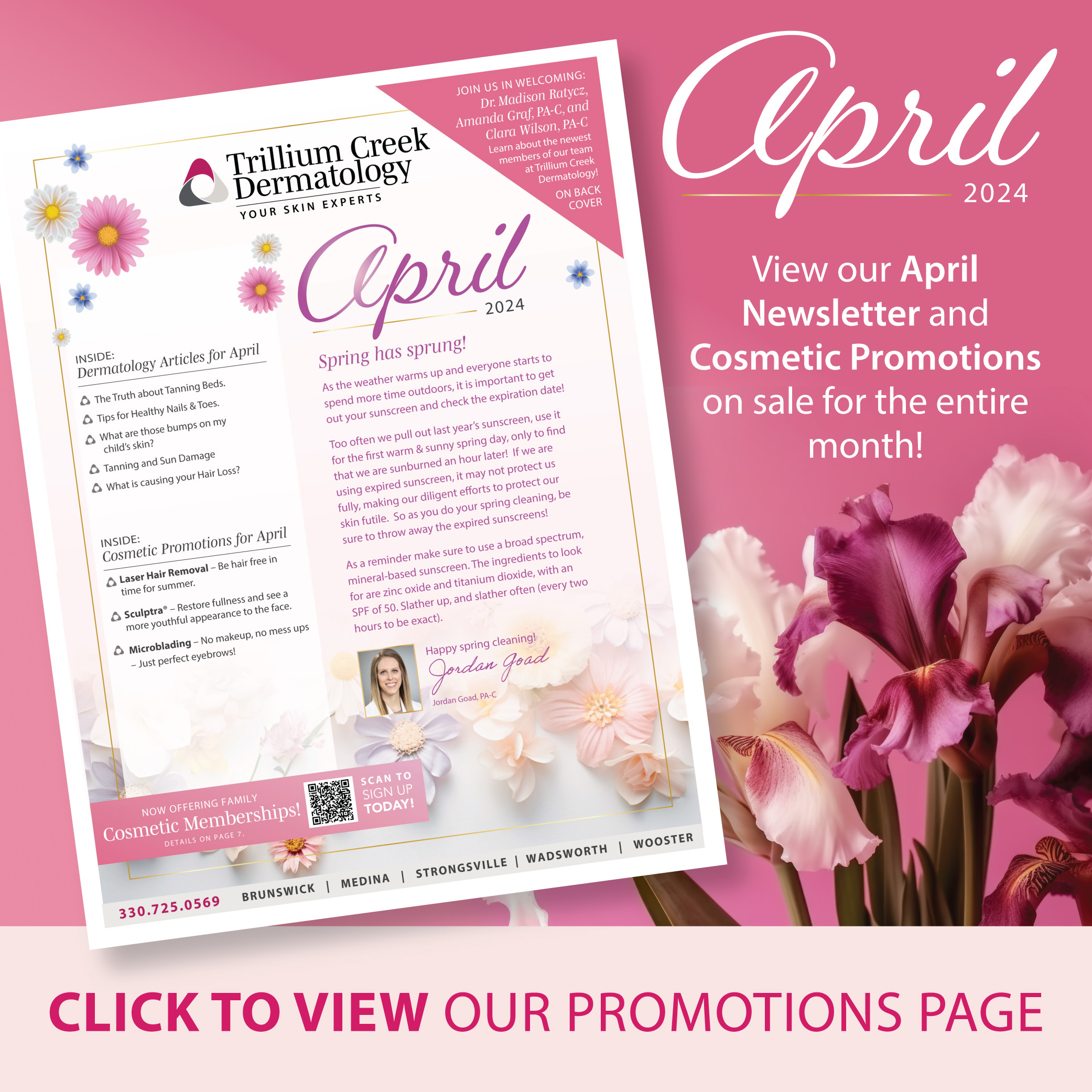
There is a pervasive belief in our culture that a tan connotes health, affluence, and beauty. Hopefully someday soon, our culture will begin to look less favorable at tanning as our knowledge increases regarding the link between skin cancer and the harmful UV exposure associated with tanning. At Trillium Creek, we hope to expose certain myths about the sun and tanning, educate our patients about the importance of sun protection and early skin cancer detection.
Myths About The Sun
“I need a tan so I won’t burn” – Studies have shown that at best, a tan gives an SPF factor of 2-3. More importantly, prolonged UV exposure leads to DNA damage, suppression of certain aspects of the immune system, and photoaging, even in the absence of sunburn.
“I need to be in the sun to get my vitamin D” – Humans obtain vitamin D from UV exposure, diet, and supplements. Foods such as salmon, cod liver oil, fortified orange juice, and dairy products are rich in vitamin D. five to ten minutes of noontime summer sun produces the maximum vitamin D production possible in the skin of a Caucasian. Further UV exposure causes increased DNA damage, but will not produce more vitamin D.
Facts About The Sun
- 90% of non-melanoma skin cancers are associated to sun exposure
- 40-50% of Caucasian Americans who live to the age of 65 will have a non-melanoma skin cancer at least once.
- Up to 90% of visible changes are associated with aging are caused by the sun.
- Chronic sun exposure causes a sallow complexion, pigment changes, redness, and wrinkling, and increased skin laxity.
- Of the estimated1.3 million cases of skin cancer in the U.S., 80% are Basal Cell Carcinoma, 15% are Squamous Cell Carcinoma, and 5% are Melanomas.
What You Can Do
- Avoid the sun between the hours of 10am to 4pm.
- Regular use of broad spectrum sunscreens (SPF 15-30 or higher) that include ingredients such as titanium dioxide, zinc oxide, avobenzone, Mexoryl SX or heliopelx.
- Wear sun protective clothing, hats, and UV protective sunglasses.
- Examine your skin regularly and seek professional advice from your dermatologist about any suspicious areas. Most skin cancers are easily treated when caught early.
Warning Signs of the Three Most Common Skin Cancers
If you notice any of the following, see your dermatologist.
BCC (basal cell carcinoma)
- An open sore that bleeds, oozes, or crusts, and does not heal after a few weeks.
- Red/pink patch of skin that is scaly or flaky, may itch or hurt, and that persists for more than a few weeks.
- A pink or pearly translucent bump or nodule that may develop tiny blood vessels on its surface
SCC (squamous cell carcinoma)
- A persistent, scaly, red patch that sometimes crusts or bleeds.
- A wart-like growth that enlarges within weeks with a central indentation.
- A raised, rough patch of skin that bleeds from minor scratching or rubbing
Melanoma – the ABCDEs
A – Asymmetry. If you draw a line through a mole, both halves should match.
B – Border. The borders of a melanoma may become uneven, scalloped, or notched.
C – Color. Melanoma will often be much darker than other moles or have a variety of colors both darker and light mixed together. Rarely melanomas can be pink or red.
D – Diameter. Usually melanomas are larger than a pencil eraser, or ¼ of an inch. They may be smaller if detected early.
E – Evolving. Any change in a mole–in size, shape, color or elevation–should prompt an elevation by a dermatologist.


